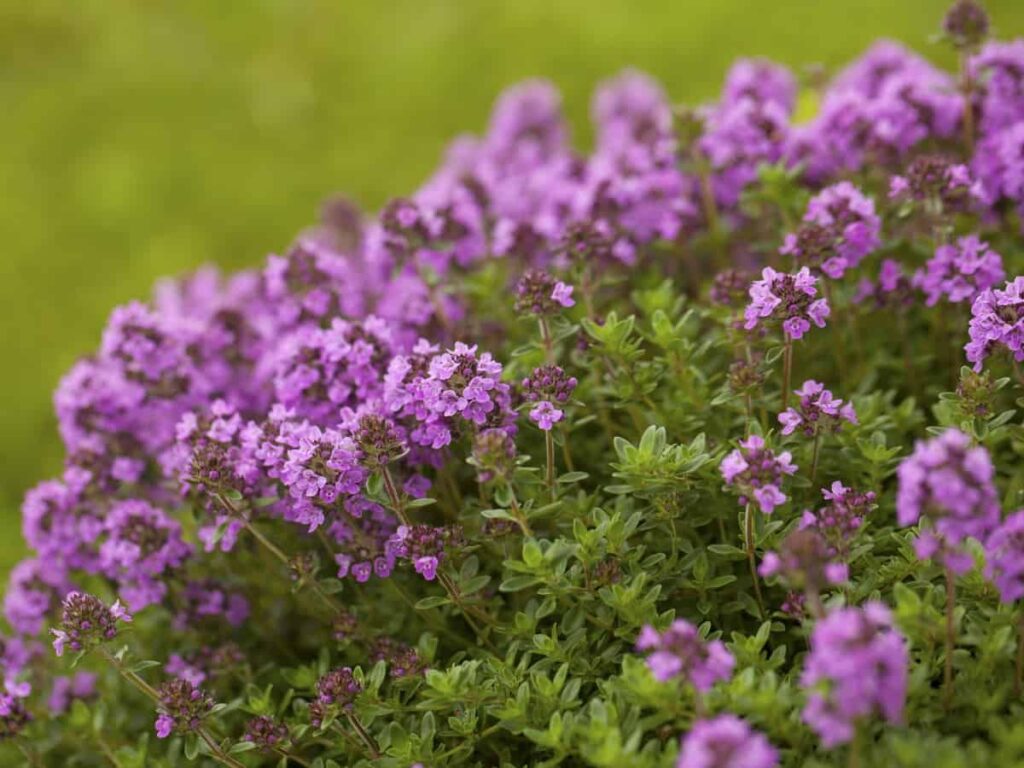Flowering thyme, a plant as versatile as it is beautiful, has captured the hearts of gardeners and chefs alike. This article delves into the world of flowering thyme, exploring its varieties, cultivation methods, culinary uses, and health benefits. Whether you’re a seasoned gardener or a curious beginner, this comprehensive guide will provide you with all the information you need to grow and enjoy flowering thyme.
Understanding Flowering Thyme
Botanical Overview
Flowering thyme, part of the Thymus genus, is a perennial herb known for its aromatic leaves and attractive blossoms. It belongs to the mint family, Lamiaceae, and is native to the Mediterranean region. The plant typically grows low to the ground, spreading outwards, making it an excellent choice for ground cover or rock gardens.
Varieties of Flowering Thyme
There are several varieties of flowering thyme, each with its unique characteristics. Some of the most popular include:
- Thymus vulgaris (Common Thyme): Known for its culinary uses, it produces small, fragrant leaves and white to pale purple flowers.
- Thymus citriodorus (Lemon Thyme): As the name suggests, it has a lemony scent and flavor, with leaves that turn golden in the fall.
- Thymus serpyllum (Creeping Thyme): Ideal for ground cover, it has tiny leaves and produces a carpet of pink or purple flowers.
- Thymus herba-barona (Caraway Thyme): Recognized for its caraway scent, this variety is often used in cooking and has pink flowers.
Cultivating Flowering Thyme
Planting and Soil Requirements
Flowering thyme thrives in well-drained soil and is tolerant of a range of soil types, including sandy and rocky soils. It prefers a sunny location but can tolerate partial shade. When planting thyme, ensure the soil is loose and well-aerated to prevent waterlogging.
Watering and Fertilizing
Thyme is drought-resistant and does not require frequent watering. Overwatering can lead to root rot, so it’s essential to let the soil dry out between watering. Fertilizing is generally not necessary, but a light application of compost or organic fertilizer can be beneficial in poor soils.
Pruning and Maintenance
Pruning is vital to maintain the plant’s shape and encourage bushier growth. After the flowering season, trim back the plant to prevent it from becoming woody and sparse. Regular harvesting of leaves for culinary use also helps in maintaining its shape.
Culinary Uses of Flowering Thyme
Flowering thyme is not just a garden beauty; it’s a culinary delight. Its leaves can be used fresh or dried in various dishes, including soups, stews, and marinades. Lemon thyme is particularly good in seafood and poultry dishes, while common thyme is a staple in Mediterranean cuisine.
Health Benefits of Flowering Thyme
Thyme is not only flavorful but also packed with health benefits. It contains thymol, an essential oil with antiseptic and antibacterial properties. Thyme tea is known for its ability to relieve coughs and sore throats. The herb is also a good source of vitamins C and A, as well as dietary fiber.
Landscaping with Flowering Thyme
Flowering thyme is an excellent choice for landscaping. Its ability to spread makes it perfect for ground covers, rock gardens, and borders. The plant’s flowers attract bees and butterflies, adding to the biodiversity of your garden.
Conclusion
Flowering thyme is a versatile and easy-to-grow herb that offers beauty, aroma, and flavor. Whether used in the garden for landscaping or in the kitchen for cooking, it’s a plant that brings joy and utility. With the right care and cultivation, flowering thyme can be a delightful addition to any garden.

